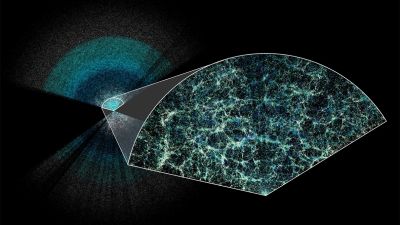'Hugely exciting': Scientists make ‘largest and most precise’ 3D map of expanding universe

Scientists have made the largest 3D map of the universe, measuring how fast it has expanded over 11 billion years by using one of the most precise measurements to date.
An international team, including researchers from the UK, used an instrument known as the Dark Energy Spectroscopic Instrument (Desi) to create the map.
Their aim was to measure the effects of dark energy, a mysterious force that is believed to be making the universe expand faster and faster.
The map, comprising more than six million galaxies, is the largest 3D map of the cosmos ever constructed, said researchers, who measured its spread with a precision of better than 1%.
Dr Eva-Maria Mueller, Ernest Rutherford Fellow at the University of Sussex, who led part of the cosmological interpretation of the Desi data, said she could not initially believe the “fascinating” results.
She said: “It was a moment I’d been eagerly anticipating since the start of my PhD. The findings were not just interesting – they were captivating, sparking fresh insights into the fundamental nature of our universe.
"It’s moments like these that remind me why I’m passionate about cosmology.”
The Desi instrument uses 5,000 tiny robots within a mountaintop telescope, near Tucson, Arizona.
Scientists were able to map the cosmos as it was billions of years ago and traced its growth to what it is today, using light from distant objects in space which are only now reaching Desi.
Professor Carlos Frenk, of Durham University’s Department of Physics and a member of the Desi team, described the findings as “hugely exciting”.
He said: “Never before has mankind measured the basic properties of our universe with such precision.”
At present, Lambda CDM, a cosmological model that describes the structure and evolution of the universe, is seen by scientists as the leading framework determining how the universe is evolving.
It includes both a weakly interacting type of matter, known as cold dark matter (CDM), and dark energy – also referred to as Lambda.
According to the model, both matter and dark matter slow down the universe’s expansion, while dark energy speeds it up.
Scientists say that while the Lambda CDM model does a good job of describing results from previous experiments and how the universe looks throughout time, Desi’s first-year results are starting to reveal subtle differences.
Dr Seshadri Nadathur, from the Institute of Cosmology and Gravitation at the University of Portsmouth, who led parts of the analysis, said: “These results are very exciting, because there are some hints that the data don’t agree as well with the Lambda CDM model as we were expecting, which may be telling us something important about dark energy.
“It is too early to give a definitive answer just yet, but we’ve only analysed a small part of the Desi dataset so far.
“We’re looking forward to finding out if these hints of tensions become more severe when we add more data.”
Researchers say that as Desi gathers more data during its five-year survey, results will become even more precise, and could potentially trigger a need to revise the standard model of the universe.
The research is being presented at the American Physical Society meeting, in the US, and the Rencontres de Moriond, in Italy, and has been published online as a pre-print on the arXiv open-access site.
Want a quick and expert briefing on the biggest news stories? Listen to our latest podcasts to find out What You Need To Know…